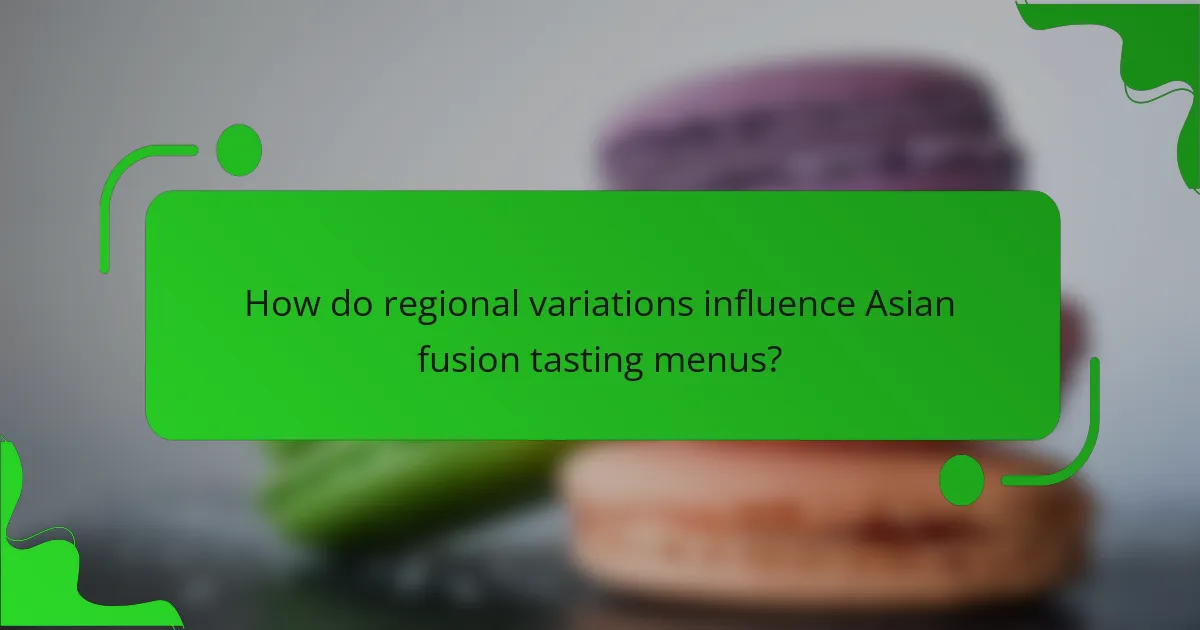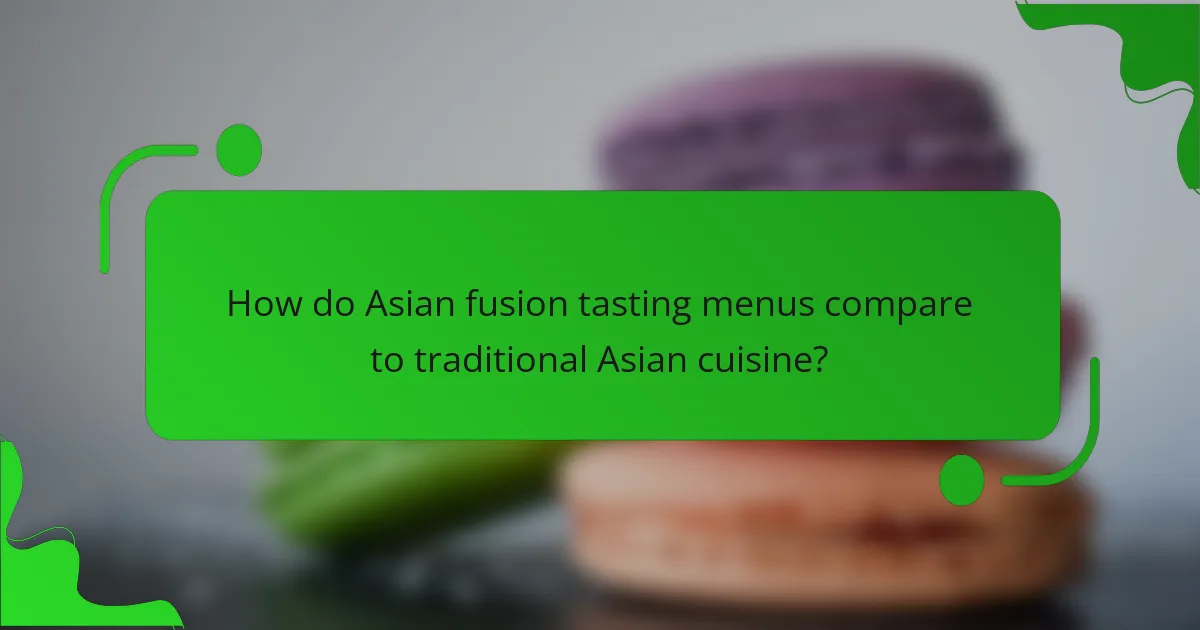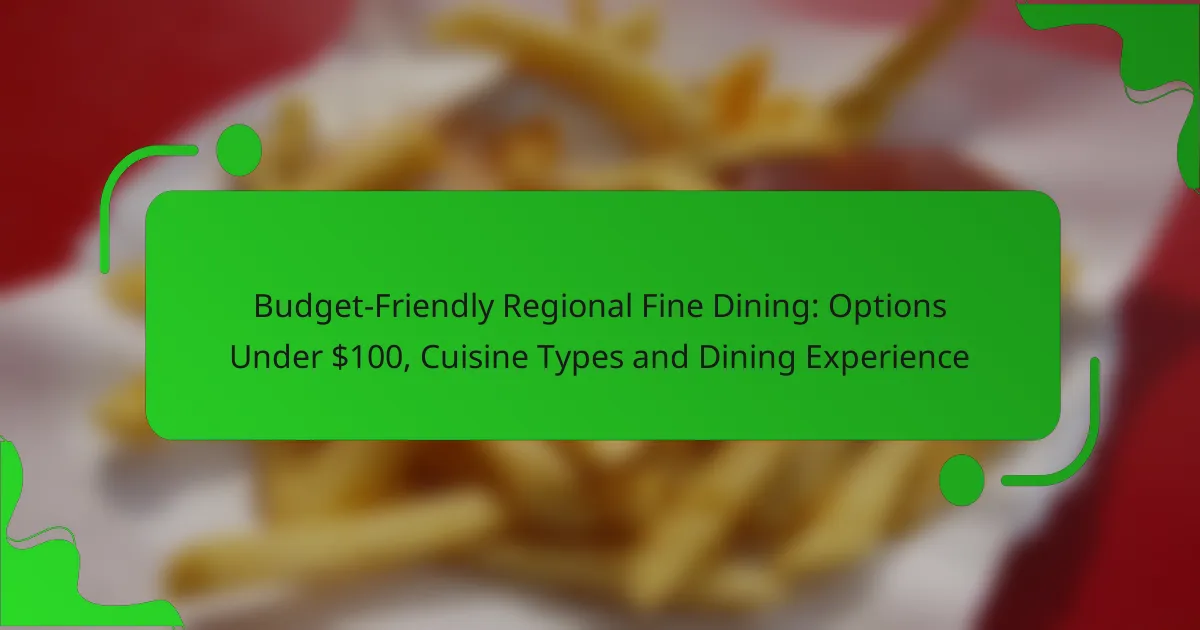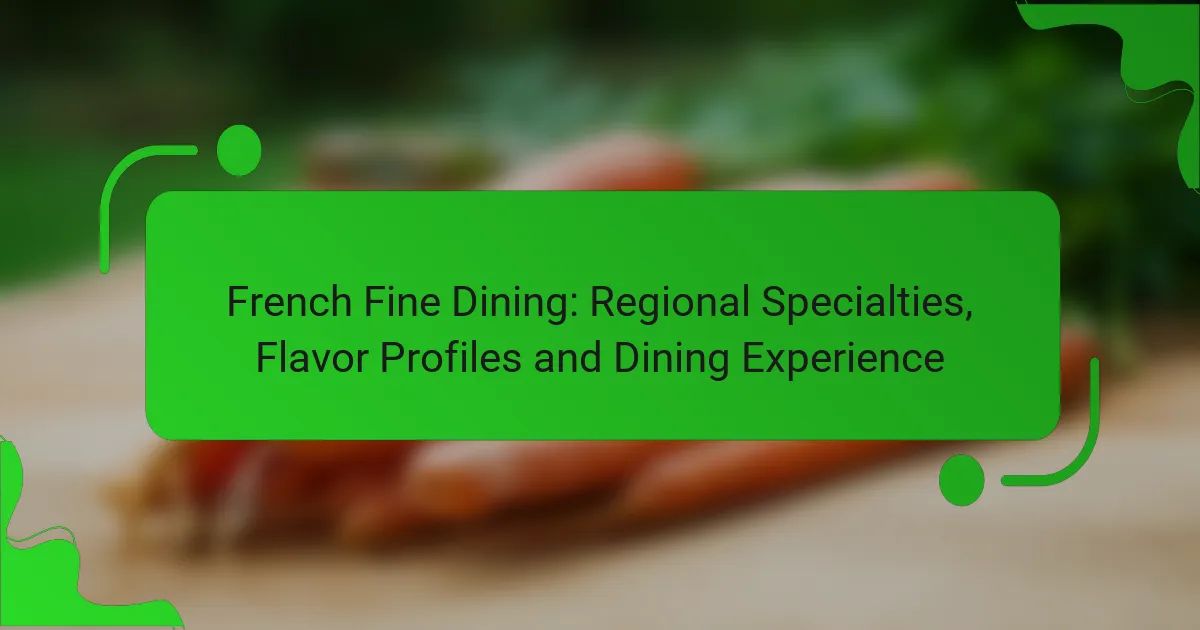Asian fusion tasting menus offer a delightful exploration of diverse culinary traditions, particularly in vibrant cities like Los Angeles. By combining regional ingredients and innovative presentations, these menus create unique dining experiences that cater to adventurous palates. The fusion of traditional Asian elements with Western techniques results in a harmonious blend of flavors and styles, showcasing the rich diversity of Asian cuisines.

What are the best Asian fusion tasting menus in Los Angeles?
Los Angeles boasts a vibrant selection of Asian fusion tasting menus that blend diverse culinary traditions, offering unique dining experiences. These menus typically feature a variety of small plates that highlight regional ingredients and innovative presentations, making them perfect for adventurous eaters.
Best restaurants offering tasting menus
Some of the top restaurants in Los Angeles known for their Asian fusion tasting menus include Koi, which combines Japanese and American influences, and Night + Market, celebrated for its Thai-inspired dishes. Another standout is Majordomo, where Korean flavors meet Californian cuisine in a creative format.
Reservations are often recommended at these popular spots, especially during peak dining hours. Expect to pay anywhere from $75 to $200 per person, depending on the restaurant and the number of courses offered.
Signature dishes to try
When exploring Asian fusion tasting menus, be sure to try signature dishes like the miso-glazed black cod at Koi or the crispy rice salad at Night + Market. At Majordomo, the smoked brisket with kimchi is a must-try, showcasing the restaurant’s unique take on Korean barbecue.
Each restaurant typically offers a rotating selection of dishes, so check their current menu for seasonal specialties that highlight fresh ingredients and innovative techniques.
Customer reviews and ratings
Customer reviews for these restaurants often highlight the creativity and bold flavors of the tasting menus. Many diners appreciate the opportunity to sample a variety of dishes, with ratings frequently averaging between 4 to 5 stars on platforms like Yelp and Google.
Common feedback includes praise for the presentation and the balance of flavors, though some diners note that the price point can be high. It’s advisable to read recent reviews to gauge current quality and service before making a reservation.

How do regional variations influence Asian fusion tasting menus?
Regional variations significantly shape Asian fusion tasting menus by incorporating local ingredients, techniques, and cultural influences. This results in unique flavor profiles and presentations that reflect the diversity of Asian cuisines while appealing to local tastes.
Key regional influences in Los Angeles
Los Angeles is a melting pot of cultures, which is reflected in its Asian fusion dining scene. Influences from nearby Asian communities, such as Chinese, Japanese, Korean, and Thai, create a vibrant culinary landscape. Chefs often blend traditional recipes with local Californian ingredients, enhancing freshness and sustainability.
Additionally, the city’s diverse population encourages experimentation with flavors and techniques. For instance, a dish may combine elements of Korean BBQ with Mexican spices, showcasing the innovative spirit of LA’s culinary scene.
Popular regional dishes in fusion menus
Fusion menus in Los Angeles often feature dishes like sushi burritos, which merge the concept of sushi with the convenience of a burrito. This dish typically includes fresh fish, rice, and vegetables wrapped in seaweed, appealing to both sushi lovers and those seeking a quick meal.
Another popular item is Korean tacos, which blend traditional Korean ingredients like bulgogi with Mexican tortillas. This combination highlights the versatility of both cuisines and caters to the city’s multicultural palate.
Other notable examples include pho ramen, which combines Vietnamese pho broth with Japanese ramen noodles, and Thai curry pizzas, merging Italian pizza with rich Thai flavors. These dishes exemplify the creative possibilities of Asian fusion in Los Angeles.

What ingredients are commonly used in Asian fusion tasting menus?
Asian fusion tasting menus often incorporate a blend of traditional Asian ingredients with Western culinary techniques. Commonly used ingredients include rice, noodles, various proteins, and a range of vegetables, all enhanced by unique sauces and spices.
Staple ingredients in Asian fusion cuisine
Staple ingredients in Asian fusion cuisine typically include rice, noodles, and a variety of proteins such as chicken, beef, and seafood. These elements serve as the foundation for many dishes, providing a familiar base that can be creatively transformed.
Vegetables like bok choy, carrots, and bell peppers are frequently used, adding color and texture. Additionally, aromatics such as garlic, ginger, and scallions play a crucial role in flavor development, enhancing the overall taste profile of the dishes.
Unique ingredients that elevate tasting menus
To elevate tasting menus, chefs often incorporate unique ingredients such as miso, yuzu, and truffle oil. Miso adds depth and umami, while yuzu introduces a refreshing citrus note that brightens dishes. Truffle oil can add a luxurious touch, merging Asian flavors with gourmet Western elements.
Other innovative ingredients might include edible flowers for presentation, or specialty sauces like hoisin or sriracha, which can enhance the flavor complexity. Using these unique components allows chefs to create memorable dishes that stand out in the realm of Asian fusion cuisine.

How is presentation important in Asian fusion tasting menus?
Presentation plays a crucial role in Asian fusion tasting menus by enhancing the overall dining experience and emphasizing the artistry of the dishes. A well-presented plate not only attracts attention but also sets the tone for the flavors and ingredients that follow.
Visual appeal and plating techniques
Visual appeal is essential in Asian fusion cuisine, where colors, textures, and shapes come together to create an inviting dish. Plating techniques such as layering, stacking, and using negative space can transform a simple meal into a work of art. For instance, vibrant sauces can be drizzled artistically around the plate, while garnishes like microgreens or edible flowers add a pop of color.
Common plating styles include minimalist approaches that emphasize a single ingredient and more elaborate presentations that showcase multiple components. Chefs often use contrasting colors and varied textures to create visual interest, ensuring that each dish is not only delicious but also visually stunning.
Impact on dining experience
The impact of presentation on the dining experience is significant, as it influences diners’ perceptions and expectations. A beautifully presented dish can elevate the anticipation and enjoyment of the meal, making it feel more special. This is particularly true in tasting menus, where each course is designed to be a unique experience.
Moreover, the way dishes are presented can reflect cultural elements and storytelling, enhancing the overall theme of the meal. For example, using traditional serving vessels or incorporating regional motifs can create a deeper connection to the cuisine’s origins. Diners are more likely to savor each bite when they are engaged visually, making presentation a key component of Asian fusion tasting menus.

What are the pricing ranges for Asian fusion tasting menus?
Asian fusion tasting menus typically range from around $50 to $300 per person, depending on the restaurant’s location, reputation, and the complexity of the dishes. These menus often feature a blend of traditional Asian ingredients and cooking techniques, presented in innovative ways.
Average costs in Los Angeles
In Los Angeles, the average cost for an Asian fusion tasting menu usually falls between $75 and $200 per person. High-end establishments may charge upwards of $250, especially if they include premium ingredients like Wagyu beef or rare seafood. Mid-range options can provide a satisfying experience for around $100.
Factors influencing pricing
Several factors influence the pricing of Asian fusion tasting menus. The quality and rarity of ingredients play a significant role; for example, menus featuring seasonal or sustainably sourced items tend to be more expensive. Additionally, the restaurant’s ambiance, chef’s reputation, and the overall dining experience can also affect costs.
Another consideration is the length and complexity of the menu. A multi-course tasting experience with intricate dishes will generally command a higher price than a simpler offering. Lastly, location matters; dining in upscale neighborhoods or tourist hotspots often leads to higher menu prices.

What are the prerequisites for enjoying Asian fusion tasting menus?
To fully enjoy Asian fusion tasting menus, diners should have an open palate and a willingness to explore diverse flavors and ingredients. Familiarity with various Asian cuisines can enhance the experience, as can an understanding of how these elements are combined in fusion dishes.
Understanding flavor profiles
Asian fusion tasting menus often blend sweet, sour, salty, and umami flavors, creating a complex and harmonious dining experience. For instance, dishes may incorporate ingredients like miso, soy sauce, or coconut milk, which provide depth and richness. Familiarizing yourself with these profiles can help you appreciate the nuances of each dish.
Common flavor combinations include spicy and sweet, such as chili paired with mango, or tangy and savory, like lime with fish sauce. Recognizing these pairings can elevate your tasting experience, allowing you to anticipate and savor each bite more fully.
Dining etiquette for tasting menus
When enjoying a tasting menu, it is essential to approach each course with mindfulness and respect. Typically, tasting menus are served in a sequence, allowing diners to experience a progression of flavors. Take your time with each dish, savoring the unique elements before moving on to the next.
It’s advisable to use the utensils provided for each course and avoid mixing dishes unless specified. If you’re dining in a formal setting, wait for the host or server to indicate when to begin each course. Engaging in conversation about the dishes can enhance the experience, but be mindful of the dining atmosphere and the preferences of your fellow diners.

How do Asian fusion tasting menus compare to traditional Asian cuisine?
Asian fusion tasting menus blend elements from various Asian culinary traditions with influences from other global cuisines, creating unique flavor profiles and presentations. In contrast, traditional Asian cuisine focuses on authentic ingredients and techniques specific to each region, emphasizing cultural heritage and time-honored recipes.
Differences in flavor and technique
Asian fusion tasting menus often feature innovative flavor combinations that may not be found in traditional dishes. For instance, a fusion dish might incorporate Japanese miso with Italian pasta, creating a new culinary experience. Techniques can also vary, with fusion chefs experimenting with modern cooking methods like sous-vide or molecular gastronomy, which are less common in traditional Asian cooking.
In traditional Asian cuisine, flavors are typically well-defined and rooted in regional practices, such as the use of specific spices or cooking styles. For example, Thai cuisine relies heavily on balancing sweet, sour, salty, and spicy elements, while Indian cuisine often emphasizes complex spice blends. Fusion menus may play with these elements but can sometimes lead to muddled flavors if not executed carefully.
Fusion vs. traditional dining experiences
The dining experience for Asian fusion often aims to surprise and delight with unexpected pairings and artistic presentations. Dishes are frequently served in smaller portions, allowing diners to sample a variety of flavors in one sitting. This contrasts with traditional Asian meals, which typically consist of larger, communal servings that highlight the importance of sharing and family-style dining.
When choosing between fusion and traditional dining, consider the occasion. Fusion can be a fun choice for adventurous eaters looking to explore new tastes, while traditional cuisine may be more suitable for those seeking authenticity and cultural connection. Be mindful of the balance between creativity and respect for the original culinary traditions to ensure a satisfying experience.

What are emerging trends in Asian fusion tasting menus?
Emerging trends in Asian fusion tasting menus focus on blending traditional Asian flavors with innovative culinary techniques and global influences. Chefs are increasingly experimenting with local ingredients, sustainability, and unique presentations to create memorable dining experiences.
Innovative chefs and their contributions
Innovative chefs are at the forefront of the Asian fusion movement, often redefining classic dishes by incorporating unexpected elements. For instance, some chefs blend Japanese sushi techniques with Peruvian ceviche, creating dishes that highlight both cultures while introducing new textures and flavors.
Many chefs are also emphasizing sustainability by sourcing local and seasonal ingredients. This approach not only supports local farmers but also allows for fresher, more vibrant dishes. For example, a chef might use locally caught seafood in a Thai-inspired curry, enhancing the dish’s authenticity and flavor profile.
Additionally, presentation plays a crucial role in the contributions of these chefs. Many are adopting artistic plating techniques that transform each dish into a visual masterpiece, often using vibrant colors and intricate designs to enhance the dining experience. This focus on aesthetics can elevate the perception of fusion cuisine, making it more appealing to diners.



